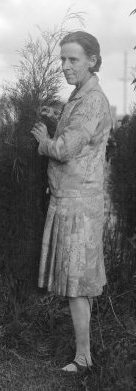American architect and excellent designer Marion always moved in a broad and diverse social environment where there was an important circle of progressive women and men; labor reformers, voters, civic activists and high society women's clubs.
Sophia Hyden was certainly an inspiration to her, having graduated as an architect from MIT five years before Marion. Julia Morgan, also an American architect, was the first woman admitted to the École des Beaux-Arts in Paris and the first woman with an architectural degree in the world who went on to design more than 700 buildings. However, in the US, before them stands out the one who is considered the first professional architect in that country, Louise Blanchard Bethune (1856-1913).
In the field of design and architecture, some from the Bauhaus such as Eileen Gray, Lilly Reich or Marianne Brandt were contemporaries of hers, but also, within the broader modern movement, we find the French Charlotte Perriand, the innovator Anne Tyng or the architect Margarete Schüte. -Lihotzky, who like Mahony, who co-designed the city of Canberra, also designed groups of houses, although Grete Lihotzky's great contribution was the famous Frankfurt kitchen. All of them also stood out in design. For its part, the bauhaus also offered the creation of innovative textile art with Anni Albers, Alma Buscher and Gubnta Stolz as featured artists.
Mahony, like other contemporaries including the great Aino Aalto or Lilly Reich herself, was overshadowed by the presence of her partner.
